기소 중지 공소 시효
기소 중지는 검찰이 현행범으로 의심되는 범죄사실을 인지했지만, 그 즉시 기소하지 않고 일정 기간 동안 증거를 수집하거나 추가 수사를 진행한 후, 기소 여부를 결정하는 절차를 말합니다. 즉, 검찰은 기소를 단서로 진행하는 게 아니라, 현잠범 사건까지 완전히 파악한 후 결정하는데, 이것이 기소 중지입니다.
기소 중지의 법적 근거는 《형사소송법》 204조입니다. 이에 따르면, 검사가 범죄사실을 확인하면 즉시 기소하기 보다는, 추가 수사를 통해 접근해야 할 사항들을 확보하고, 법적 논리를 짜내어 기소 결정을 내리게 됩니다.
공소 시효의 개념과 종류
공소 시효란, 범죄행위가 일어난 지 얼마나 지났느냐에 따라, 해당 범죄를 기소할 수 없게 되는 시간을 말합니다. 공소 시효는 그 범죄행위의 성격과 형태에 따라 다양한 종류가 존재합니다.
진행 중인 범죄행위나 중대한 범죄행위의 경우, 공소 시효가 존재하지 않습니다. 하지만 일부 소액금 범죄와 같은 경우에는 범죄행위가 일어난 후 일정 기간 내에 검찰이 기소하지 않으면, 해당 범죄행위를 정확히 이행한 것으로 인정되어 공소 시효가 존재합니다. 그러므로 기소 중지가 아닌 공소 시효에 해당하는 범죄행위는 등록되지 않은 범죄로 간주됩니다.
기소 중지 청구의 절차와 이유
검찰이 기소 중지를 청구하는 경우, 우선 현장에서 조사를 실시합니다. 범죄행위가 일어난 증거, 용의자와 피해자의 진술 등을 차분하게 검토한 후 기소 중지 청구 여부를 결정합니다. 기소 중지 요청을 할 때, 검찰은 해당 범죄행위를 충분히 이해하고 이해한 바를 활용하여 기소 여부를 결정해야 합니다. 이후 기소 중지 청구를 하면, 검찰은 법원에 신청서를 제출하게 됩니다. 신청서에는 검찰의 기소 중지 요청 내용과 그 이유, 증거, 진술 등이 포함됩니다. 이를 바탕으로 법원은 기소를 중지할지, 재검토를 요청할지 여부를 결정합니다.
기소 중지와 공소 시효 관계
기소 중지와 공소 시효는 같은 것이 아니며, 기소 중지와 관련된 형사소송 기간 내에는 공소 시효가 중단되는 것이 아닙니다. 공소 시효는 범죄행위 발생일로부터 일정 기간 후 달성되는 것이므로, 공소 시효가 존재하는 범죄행위라도 기소 중지가 되어 범죄행위 혐의가 없어진 경우, 공소 시효는 중단되지 않습니다.
기소 중지 및 공소 시효와 관련된 사례
한 예로, 2009년 파리의 유례지숙(暈慮之粛) 사건이 있습니다. 1949년 청년 대학생 유례지숙이 특별목적경비대원(특목경)으로부터 폭행 당해 사망한 사건으로, 이 사건의 당시는 완전한 형사기록이 없던 것으로 밝혀졌습니다. 그러나 2009년 현준성 한국시민재단 이사장을 대표로 한 조사단이 다년간의 수사와 전문가의 최신 기술을 활용하여 유례지숙의 죽음을 법적으로 입증한 후 처음으로 공식적인 조사가 이루어졌습니다. 현준성 조사단은 검찰로부터 혐의 제기 여부를 결정하도록 요청했으며, 검찰은 기소 중지를 통해 추가 수사를 진행하기로 결정했습니다.
또한, 2018년 강민석 민주노총 서울·경기북부지역본부 대책위원장의 기소 중지 청구 사건이 있었습니다. 강민석 대책위원장은 경찰에게 적의를 표시하거나 직장 내 면담에서 범죄 혐의가 드러난 것으로 간주되어 기소됐으며, 손해배상취지로 법원에 제소한 사건입니다. 그러나 검찰은 추가로 수사할 필요성이 있다며 강민석 대책위원장의 기소를 중지하고 추가 수사를 진행하기로 결정했습니다.
기소 중지 및 공소 시효의 문제점 및 개선 방안
기소 중지는 당사자들 사이에 갈등을 극복하는 데 유용하지만, 만약 잦은 사용으로 인해 공소 시효가 지나간 경우 범죄행위를 추적하거나 기록할 수 없는 문제가 발생할 수 있습니다. 따라서 기소 중지 요청을 받게 된 법원은 절제와 전략적 대응이 필요합니다.
기소 중지와 공소 시효를 개선하기 위해서는 각 지역의 검찰청이 이에 대한 기준과 법률 개선을 진행해야 합니다. 또한, 이를 감시하고 제어할 수 있는 감독 기구를 도입해야 합니다. 다양한 정책 시뮬레이션을 통해 법률을 개선하여 범죄행위를 처벌할 수 있는 시간을 연장하는 방식으로 공소 시효를 최대한 줄이는 방안도 있을 수 있습니다.
FAQs
Q1: 기소 중지란 무엇인가요?
A1: 기소 중지는 검찰이 현행범으로 의심되는 범죄사실을 인지했지만, 즉시 기소하지 않고 추가 수사나 증거 수집 후, 기소 여부를 결정하는 절차입니다.
Q2: 기소 중지의 법적 근거는 무엇인가요?
A2: 기소 중지의 법적 근거는 《형사소송법》 204조입니다.
Q3: 공소 시효란 무엇인가요?
A3: 공소 시효는 범죄행위가 일어난 지 얼마나 지났느냐에 따라, 해당 범죄를 기소할 수 없게 되는 시간을 말합니다.
Q4: 기소 중지 청구의 절차는 무엇인가요?
A4: 검찰은 기소 중지 요청을 하기 위해 범죄 행위에 대한 자세한 조사를 실시하고 이를 기반으로 기소 중지 요청을 합니다. 검찰은 이후 법원에 신청서를 제출하게 됩니다.
Q5: 기소 중지와 공소 시효는 어떤 관계가 있나요?
A5: 기소 중지와 공소 시효는 같은 것이 아니며, 기소 중지와 관련된 형사소송 기간 내에는 공소 시효가 중단되는 것이 아닙니다.
Q6: 기소 중지와 관련된 범죄 사례는 어떤 것이 있나요?
A6: 2009년 파리의 유례지숙 사건과 2018년 강민석 민주노총 서울·경기북부지역본부 대책위원장 기소 중지 청구 사건이 있었습니다.
Q7: 기소 중지와 공소 시효의 문제점은 무엇인가요?
A7: 기소 중지는 공소시효가 지나간 경우, 범죄행위를 추적하거나 기록할 수 없는 문제가 발생할 수 있습니다.
Q8: 기소 중지와 공소 시효를 개선하기 위해서는 무엇을 해야 하나요?
A8: 기소 중지와 공소 시효를 개선하기 위해서는 각 지역의 검찰청이 이에 대한 기준과 법률 개선을 진행해야 합니다. 또한, 이를 감시하고 제어할 수 있는 감독 기구를 도입해야 합니다.
사용자가 검색한 키워드: 기소 중지 공소 시효 기소중지 확인방법, 기소중지 지명수배, 기소중지 뜻, 기소중지 합의, 기소유예 뜻
Categories: Top 27 기소 중지 공소 시효
기소중지 공소시효 정지에 대한 궁금증과 기소에 대한 억울함이 있으시다면!
여기에서 자세히 보기: future-user.com
기소중지 확인방법
형사사건에서 기소되면 검찰이 공소를 제기하고 법원에 가해지게 된다. 그러나 소송 진행 중 기소중지 결정이 내려지는 경우도 있다. 이 결정은 검찰이나 법원에서 내려지는데, 대개는 형법상의 조건이 충족되지 않았거나, 수사 절차가 부재로 이루어졌거나, 또는 증거 부족 등으로 인해 기소할 수 없는 사유가 있을 때 내려지는 결정이다. 그러나 이러한 결정은 법적으로 이루어진 결정으로, 예외적인 경우가 아니라면 다시 고발될 수 없다.
따라서 소송 진행 중 기소중지 결정이 내려졌는지 여부를 확인하는 것은 매우 중요하다. 그러나 이러한 정보는 일반적으로 공개되지 않기 때문에 확인하는 것이 쉽지 않다. 이에 따라 기소중지 확인방법을 소개하고자 한다.
① 검찰서 찾아보기
가장 쉽게 확인할 수 있는 방법 중 하나는 검찰서 찾아보기다. 검찰소에서는 대개 현재 진행 중인 형사사건에 대한 정보를 제공하고 있으며, 이를 통해 해당 사건의 기소 여부와 현재 상황을 확인할 수 있다. 검찰소에서는 이러한 정보를 온라인으로 제공하기도 하지만, 매우 예민한 정보이기 때문에 대개는 직접 방문하여 확인하는 것이 더 안전하다.
② 법원 찾아보기
또 다른 방법은 법원에서 직접 확인하는 것이다. 형사사건은 대개 지방법원에서 처리되기 때문에, 해당 지방법원을 방문하여 기소중지 여부를 확인할 수 있다. 이 경우에도 개인정보보호와 관련된 문제가 있으므로, 정보 확인을 위해서는 정확한 사유와 문서가 필요하다.
③ 변호사와 상담하기
기소중지 결정은 대개 검찰 또는 법원에서 내려지기 때문에, 이러한 결정을 알기 쉽지 않다. 그러나 변호사를 통해 정보를 얻을 수도 있다. 변호사는 대개 클라이언트를 대리하여 법정에서 진행되는 일련의 소송 절차를 적극적으로 참여하는데, 이러한 과정에서 자연스럽게 이러한 정보를 얻을 수 있다.
④ 구인광고 등에서 확인하기
기소중지 결정이 내려진 경우 해당자의 인권침해등이 없는 경우 관련 기관들에서 구인을 할 수 있게 된다. 예를 들어 주민센터 또는 인력유통센터 등에서 남자 또는 여자 전문인력을 모집할 때, 기소중지 결정이 내려진 사람의 경우에는 제한적이지만, 지원이 가능하다. 이 경우에도 개인정보보호와 관련된 문제가 있으므로, 지원하기에 앞서 정확한 확인이 필요하다.
상기한 방법 중 어떠한 방법을 선택하더라도, 기소중지 여부를 확인하기 위해서는 반드시 정보 확인을 위한 사유와 문서가 필요하다. 특히 인터넷 검색이나 구인광고 등을 통해 확인할 경우, 개인정보보호 관련 문제를 제대로 판단해야 한다. 인권 침해나 개인정보의 위험을 최소화하기 위해, 정보 확인 시에는 신중함이 필요하다.
FAQs
Q1. 기소중지 결정이 나는 경우는 언제인가요?
기소중지 결정은 대개 형법상의 조건이 충족되지 않았거나, 수사 절차가 부재로 이루어졌거나, 또는 증거 부족 등으로 인해 기소할 수 없는 사유가 있을 때 내려지는 결정입니다.
Q2. 기소중지 확인 방법 중에 제일 쉬운 방법은 무엇인가요?
가장 쉽게 확인할 수 있는 방법 중 하나는 검찰서 찾아보기입니다. 검찰소에서는 대개 현재 진행 중인 형사사건에 대한 정보를 제공하고 있으며, 이를 통해 해당 사건의 기소 여부와 현재 상황을 확인할 수 있습니다.
Q3. 기소중지 확인시 개인정보보호와 관련해 주의할 점이 있나요?
기소중지 확인 시에는 개인정보보호와 관련된 문제를 제대로 판단해야 합니다. 인권 침해나 개인정보의 위험을 최소화하기 위해, 정보 확인 시에는 신중함이 필요하며, 값을 내는 사과는 되도록 하지 않도록 하여야 합니다.
Q4. 검찰/법원에서 직접 확인하는 경우는 어떻게 하면 되나요?
법원에서 직접 확인하는 경우에는 해당 지방법원을 방문하여 기소중지 여부를 확인할 수 있습니다. 이 경우에도 개인정보보호와 관련된 문제가 있으므로, 정보 확인을 위해서는 정확한 사유와 문서가 필요합니다.
Q5. 변호사의 도움을 받을 수 있는 방법은 어떤 것이 있나요?
변호사를 통해 기소중지 결정에 대한 정보를 얻을 수도 있습니다. 변호사는 대개 클라이언트를 대리하여 법정에서 진행되는 일련의 소송 절차를 적극적으로 참여하는데, 이러한 과정에서 자연스럽게 이러한 정보를 얻을 수 있습니다.
기소중지 지명수배
This legal mechanism is often used in cases where the prosecutors need more time to gather evidence or where they believe that the suspect may flee or tamper with the evidence if not arrested promptly. It is also used in cases where the suspect poses a threat to society or to the investigation itself.
In this article, we will discuss in-depth what 기소중지 지명수배 means, when it is used, how it works, and its implications. We will also clarify some of the common misconceptions and answer the frequently asked questions about this legal process.
What is 기소중지 지명수배?
기소중지 지명수배 is a legal term that can be translated as “suspension of prosecution and indictment with arrest warrant.” It is a legal mechanism used by the South Korean prosecutors to delay the criminal prosecution of a suspect while simultaneously issuing an arrest warrant against them.
This process is regulated by the Criminal Procedure Act and can be used in cases where the prosecutors need more time to gather evidence or where they believe that the suspect may flee or tamper with the evidence if not arrested promptly. It is also used in cases where the suspect poses a threat to society or to the investigation itself.
When is 기소중지 지명수배 used?
기소중지 지명수배 is usually used in cases where the prosecutors believe that they need more time to gather evidence or where they suspect that the suspect may flee or tamper with the evidence if not arrested promptly. It is not used in every criminal case and is reserved for special cases where the prosecutors believe that the suspect poses a risk to the investigation or society.
How does 기소중지 지명수배 work?
처벌법 wrote in Article 230 that “If it is necessary in order to arrest an accused person, the competent prosecutor may file a petition with the competent court for an arrest warrant within thirty days after the date of the occurrence of the crime or the date of discovering the offender; when it is not possible to finish investigation, the prosecutor may file a petition within thirty days after the date of completion of investigation.”
When the prosecutors decide to use 기소중지 지명수배, they file a petition with the competent court seeking an arrest warrant against the suspect. If the court grants the petition, the warrant is issued, and the suspect is arrested and detained. The prosecution is then temporarily suspended while the investigation continues, and the suspect remains in custody until the case is resolved.
During the period of 기소중지 지명수배, the prosecutors may continue to gather evidence and interview witnesses. Once they have sufficient evidence to proceed with the prosecution, they may file an indictment and resume the prosecution. If the prosecution is not resumed within a certain period of time, the arrest warrant may be canceled, and the suspect may be released.
What are the implications of 기소중지 지명수배?
기소중지 지명수배 is a controversial legal mechanism that has been criticized for its potential for abuse and violation of human rights. When used judiciously, it can help the prosecutors gather sufficient evidence to build a strong case against the suspect. However, if abused, it can lead to indefinite detention and violations of due process.
Therefore, it is crucial that 기소중지 지명수배 is used judiciously and only in cases where it is necessary to protect the investigation or society. The suspects must be treated humanely, and their rights must be respected, including the right to legal representation, the presumption of innocence, and the right to a fair trial.
Frequently Asked Questions (FAQs)
1. Is 기소중지 지명수배 the same as an arrest warrant?
No, 기소중지 지명수배 is not the same as an arrest warrant, although both involve the arrest of the suspect. An arrest warrant is issued by the court to allow the police to arrest a suspect based on probable cause that they have committed a crime. 기소중지 지명수배, on the other hand, is a legal mechanism used by prosecutors to delay the prosecution of a suspect while simultaneously issuing an arrest warrant against them.
2. Can anyone be subject to 기소중지 지명수배?
No, only suspects who are being investigated for certain crimes can be subject to 기소중지 지명수배. According to the Criminal Procedure Act, 기소중지 지명수배 can be applied in cases where the suspect may flee or tamper with evidence if not arrested promptly or where the suspect poses a threat to society or to the investigation.
3. How long can 기소중지 지명수배 last?
기소중지 지명수배 typically lasts for up to six months, and during this period, the prosecution is temporarily suspended while the suspect is held in custody. If the prosecution is not resumed within this period, the arrest warrant may be canceled, and the suspect may be released.
4. Can the suspect be released from custody during 기소중지 지명수배?
No, the suspect is typically not released from custody during 기소중지 지명수배 unless the court grants bail or the arrest warrant is canceled. 기소중지 지명수배 is used to ensure that the suspect remains in custody while the prosecution is temporarily suspended, and their release may compromise the investigation or pose a danger to society.
5. Can 기소중지 지명수배 be appealed?
Yes, the suspect or their legal representative may appeal the decision to issue an arrest warrant or to apply 기소중지 지명수배. However, the appeal does not automatically suspend the arrest warrant or the application of 기소중지 지명수배, and the suspect may remain in custody while the appeal is pending.
Conclusion
기소중지 지명수배 is a legal mechanism used by prosecutors in South Korea to delay the prosecution of a suspect while simultaneously issuing an arrest warrant against them. It is used in cases where the prosecutors need more time to gather evidence or to prevent the suspect from fleeing or tampering with the evidence.
While it can be an effective tool in protecting the investigation and society, it is also controversial due to its potential for abuse and violations of human rights. Therefore, it is crucial that 기소중지 지명수배 is used judiciously and in accordance with the law and that the suspects’ rights are respected, including the right to legal representation, the presumption of innocence, and the right to a fair trial.
주제와 관련된 이미지 기소 중지 공소 시효

기소 중지 공소 시효 주제와 관련된 이미지 46개를 찾았습니다.





![7일/일ND:경남] 소재 파악 안돼 기소중지..한 해 20 ::::: 기사 7일/일Nd:경남] 소재 파악 안돼 기소중지..한 해 20 ::::: 기사](https://i.ytimg.com/vi/RDUaQ4128pw/maxresdefault.jpg)
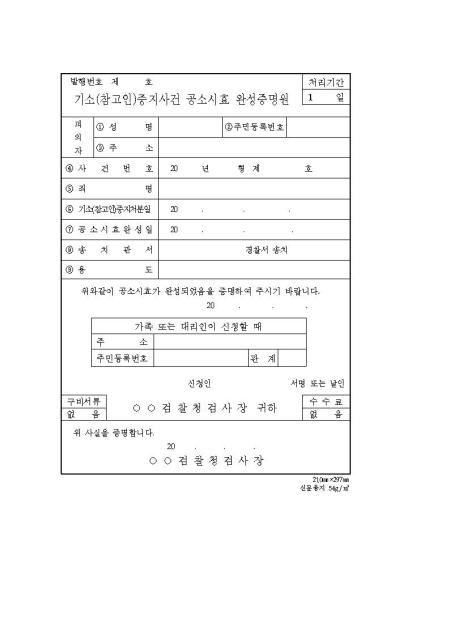



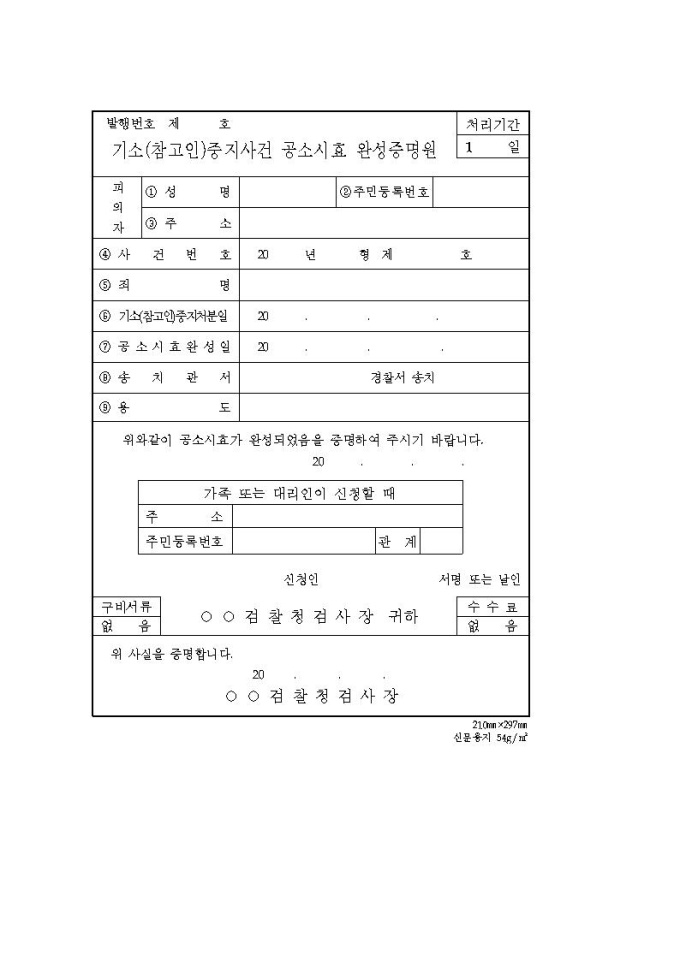


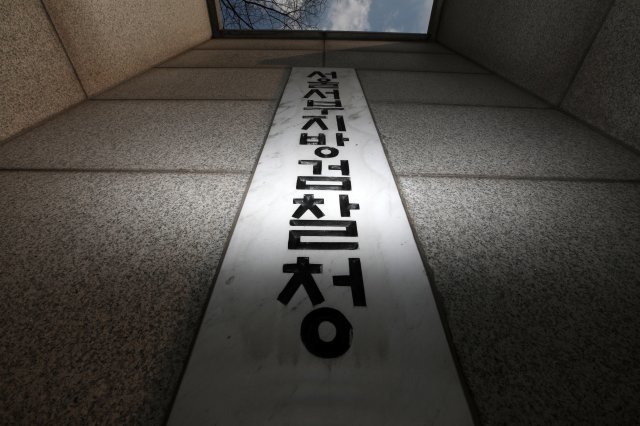
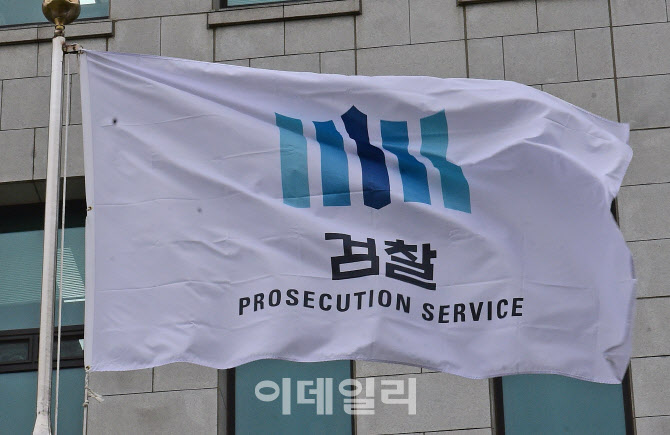

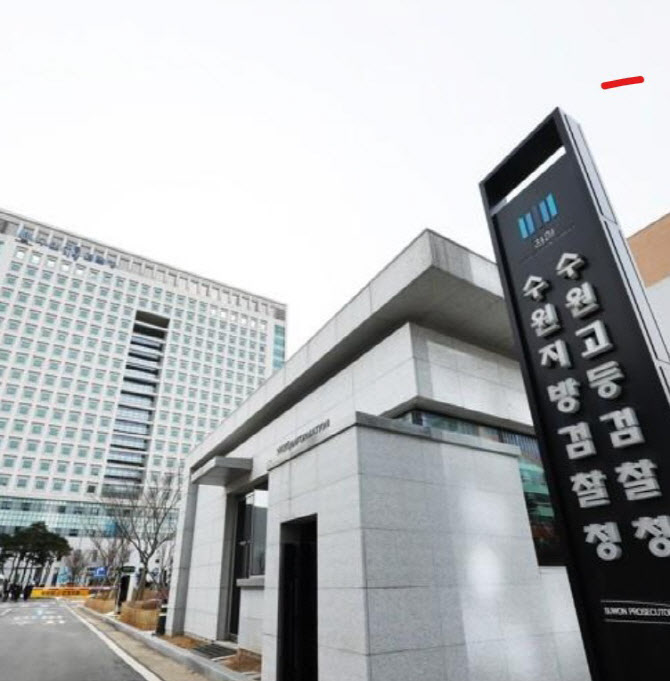



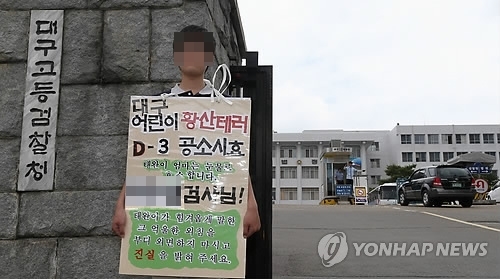
![DA:이슈] 마이크로닷 부모 사기피소? 공소시효 이미 끝났을까|스포츠동아 Da:이슈] 마이크로닷 부모 사기피소? 공소시효 이미 끝났을까|스포츠동아](https://dimg.donga.com/wps/SPORTS/IMAGE/2018/11/20/92931316.4.jpg)
Article link: 기소 중지 공소 시효.
주제에 대해 자세히 알아보기 기소 중지 공소 시효.